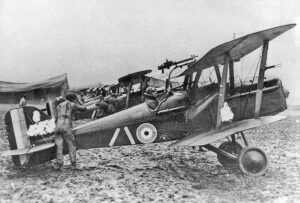
Royal Aircraft Factory S.E.5a
The Royal Aircraft Factory S.E.5a was a British fighter aircraft designed by the Royal Aircraft Factory and used during World War I.
World War I (or the Great War) was the first major conflict that involved the large-scale use of warplanes and aircraft. In the past, some countries had used Zepellins and observation balloons for reconnaissance; however, during WW1, airplanes became widespread – particularly at the outset of the war. During this time, engineers and pilots had to learn from experience, as there wasn’t much development to rely on. This is why many specialized types of aircraft were created during the WW1 period.
These aircraft epitomize the innovation and courage that defined the first major conflict in the air. So, step back in time and discover the engineering marvels and valiant stories behind these featured warplanes from World War I.

The Royal Aircraft Factory S.E.5a was a British fighter aircraft designed by the Royal Aircraft Factory and used during World War I.
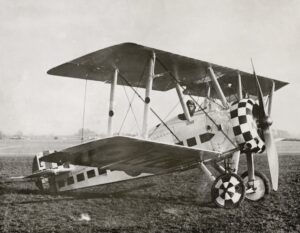
The Sopwith Camel is a British WW1 single-seat biplane fighter that was used in the Western Front in 1917.
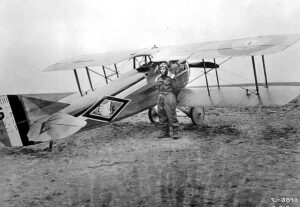
The SPAD S.XIII was a French biplane fighter aircraft produced by Société Pour L’Aviation et ses Dérivés and used during World War I.

The Nieuport 17 was a French sesquiplane fighter aircraft designed by the Nieuport company and used during World War I.
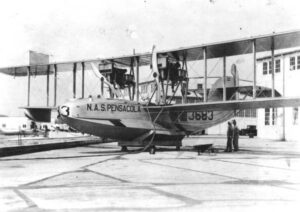
The Aeromarine 75 or Felixstowe F5L was a military flying boat manufactured during WW1 and first flown on 15 July 1918.
Follow the events and milestones of World War I.
July 28, 1914
April 1, 1915
May 31, 1916
April 6, 1917
November 11, 1918
The outbreak of World War I marked the onset of rapid aviation advancements, initially used for reconnaissance.
The Fokker Eindecker E.I, a German monoplane, introduced synchronized machine guns, making it the first purpose-built fighter aircraft.
The Battle of Jutland showcased the increasing importance of aircraft in reconnaissance during naval warfare.
The U.S. entry into World War I significantly boosted Allied air forces, contributing to the development and deployment of new aircraft.
The Armistice, ending World War I, marked the transition to advanced fighter and bomber aircraft, laying the foundation for future aviation evolution.
World War I marked a pivotal moment in the history of aviation, witnessing the rapid evolution of aircraft from fragile and experimental machines to formidable warplanes. The United Kingdom played a significant role in this transformation, contributing innovative designs and skilled aviators to the conflict. Here are some notable WWI aircraft and warplanes associated with the United Kingdom:
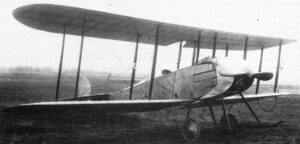
The Royal Aircraft Factory B.E.8 was a British single-engine, two-seat biplane designed by the Royal Aircraft Factory and used during WW1.
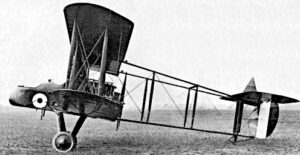
The Royal Aircraft Factory F.E.2 was a British day and night bomber and fighter used by the Royal Flying Corps during the First World War.
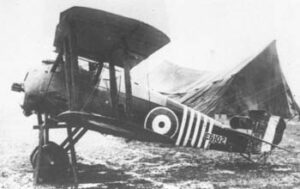
The Sopwith Snipe was a British single-seat biplane fighter used by the Royal Air Force (RAF) during the First World War.
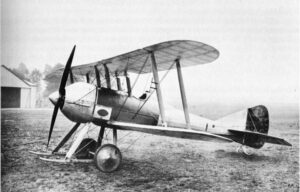
The Royal Aircraft Factory S.E.2 was an early British single-seat scout aircraft designed by Royal Aircraft Factory and used during World War I.
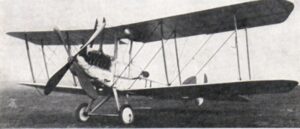
The Royal Aircraft Factory B.E.12 was a British single-engine, single-seat biplane designed by the Royal Aircraft Factory and used during WW1.
World War I marked the dawn of aerial warfare, and Germany was at the forefront of pioneering aircraft technology. German engineers and aviators introduced innovative designs that left a lasting impact on the course of aviation history. The Fokker Dr.I, a triplane famously associated with the legendary “Red Baron” Manfred von Richthofen, became an iconic symbol of German air power. And on the strategic front, the Gotha G.V twin-engine bomber showcased Germany’s commitment to long-range bombing missions.

The Albatros D.III was a German fighter biplane aircraft used by the Imperial German Army Air Service (Luftstreitkräfte) during World War I.
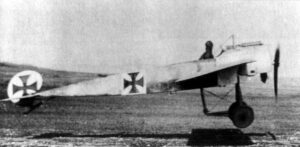
The Fokker Eindecker III (or E.III) was a German single-seat monoplane fighter aircraft used during World War I.

The Albatros D.I was a German fighter aircraft used by the bulk of the German and Austrian fighter squadrons during World War I.

The Zeppelin-Staaken Riesenflugzeuge was a group of large German bomber aircraft powered by four or more engines and built from 1915 to 1919.

The Siemens-Schuckert D.IV (SSW) was a German aircraft used during World WEar I (although it entered the conflict rather late)
In the crucible of World War I, France emerged as a pioneering force in aviation, introducing innovative aircraft that left an indelible mark on military aviation. The SPAD S.XIII, a nimble and powerful fighter, became a symbol of French air prowess. Nieuport 17 biplanes, celebrated for their agility, played a vital role in the skies over the Western Front. Meanwhile, the Voisin III and Farman MF.11 exemplified France’s commitment to reconnaissance and bombing missions.

The Caudron G.3 was a single-engined sesquiplane widely used during World War I as a trainer and reconnaissance aircraft.

The Morane-Saulnier N was a French monoplane fighter used during World War I and designed by Morane-Saulnier. It was nicknamed the Bullet.

The Morane-Saulnier I or Type I was a French fighter aircraft first flown in 1910 and a more powerful version of the Morane-Saulnier N.

The Morane-Saulnier BB was a French military observation aircraft produced during World War I and used by Britain’s Royal Flying Corps.

The Nieuport 17 was a French sesquiplane fighter aircraft designed by the Nieuport company and used during World War I.